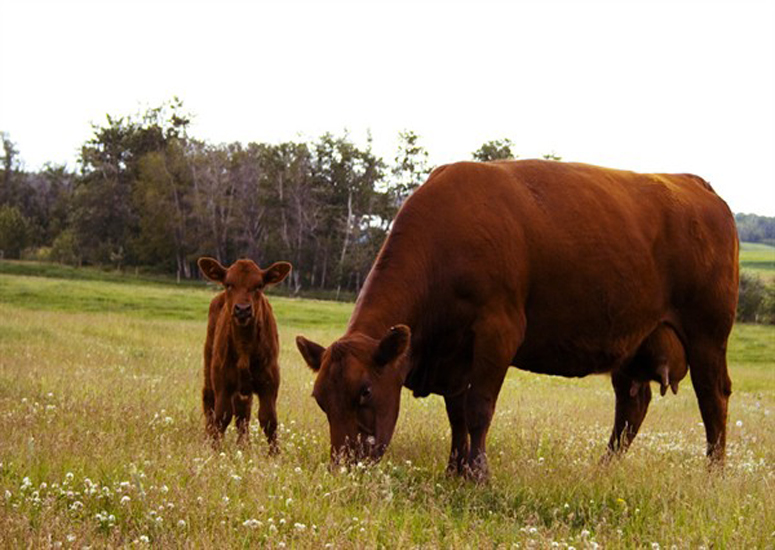
Agricultural News
Don't Get Blindsided by Anaplasmosis
Wed, 02 Jul 2014 15:46:37 CDT

Dave Sparks, DVM, Oklahoma State University Area Extension Veterinarian writes in the latest Cow-Calf Newsletter:
The golden days of summer are finally here! No more fighting snow, ice and mud to feed the cows every day. Calves are bucking and playing while their mothers fatten on the best forage of the year. Now is the time to let the cattle fend for themselves for a while and turn our thoughts to other things. It's time to get ready to hit the hayfields, farm small grain acres, and maybe even work in a little family vacation time while the kids and grandkids are out of school. In the cattle business, however, as soon as you turn your back bad things can be sneaking up on you.
In Oklahoma anaplasmosis can cause serious problems any time of the year, but summer is the time when it is most prevalent. There are several reasons why this is so. In summer there are greater populations of insect vectors to spread the disease from carrier animals. Many cases are spread by ranchers when they work their herds in the spring and early summer and show up after an incubation period in midsummer. Perhaps the biggest issue is that we just don't spend as much time with our cattle in the summer as when we are supplemental feeding in the winter and small problems can become giant problems before we are aware of them.
The insect vectors include ticks and biting flies. Controlling these pests will go a long way towards controlling anaplasmosis. Human vectors transfer anaplasmosis from carriers to susceptible animals via hypodermic needles, surgical instruments, or anything that transfers minute quantities of blood from animal to animal. Always change needles frequently and clean instruments between animals. It is often possible to determine the type of vector by the course of the disease. In cases that come from insect vectors it is typical to see one or two severe cases followed several weeks later by an outbreak of several cases that trace back to the original infections earlier. In cases arising from human transfer it is typical to see multiple cases all developing at or near the same time several weeks after cattle have been processed. No matter the source, it is early detection and quarantine of affected animals is vital to limit the spread and avoid major losses.
Anaplasmosis attacks and destroys the red blood cells, causing anemia and often ultimately death. The first observable sign is a yellow or orange coloration around the eyes and or vulva due to pigments released by hemoglobin breakdown. Animals that are normally gentle become anxious and intractable, often wanting to fight, due to lack of oxygen to the brain. When symptoms are severe many animals die while being gathered for treatment due to lack of oxygen and excitability. Once the case is severe antibiotics are no longer affective. It may be advisable to leave advanced cases alone and let the disease run its course while removing the healthy animals from the pasture to avoid further infections. Recovered animals serve as carriers, but sick animals are about 10 times more infective than recovered animals, so quarantining actively sick animals is of greatest importance.
A vaccine is available but it has provisional licensing only at this time and in Oklahoma must be obtained through a licensed veterinarian. Your veterinarian can also make recommendations for controlling infections by using antibiotics in the salt or mineral and eliminating the carrier state of recovered animals with parenteral antibiotics. Perhaps the best thing to remember to prevent catastrophic losses this summer is to check often and catch problems early. Don't wait for it to rain to find time to check the cows.
WebReadyTM Powered by WireReady® NSI
Top Agricultural News
More Headlines...



















